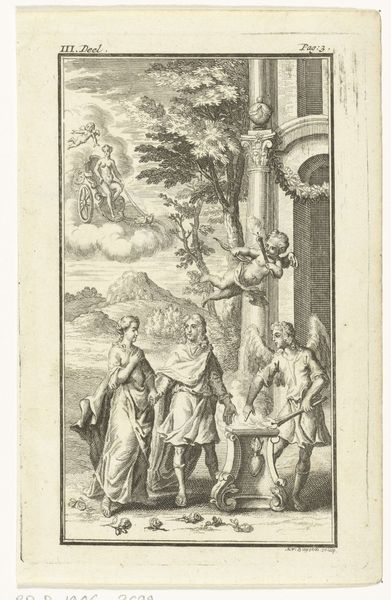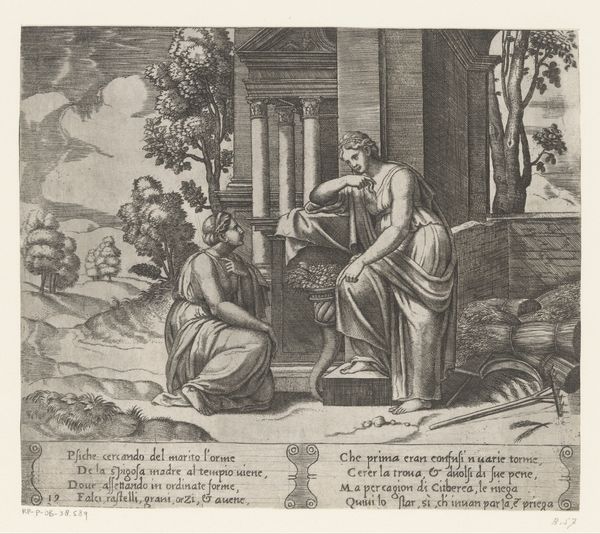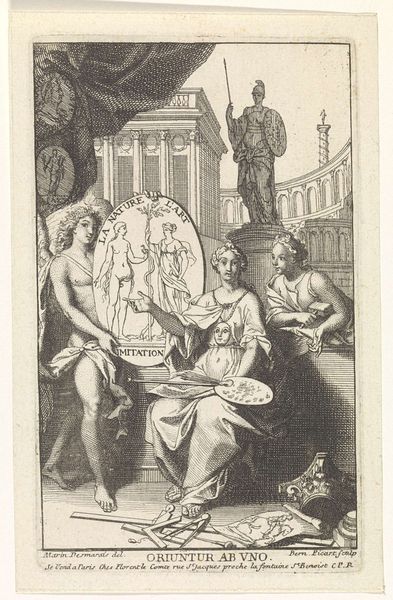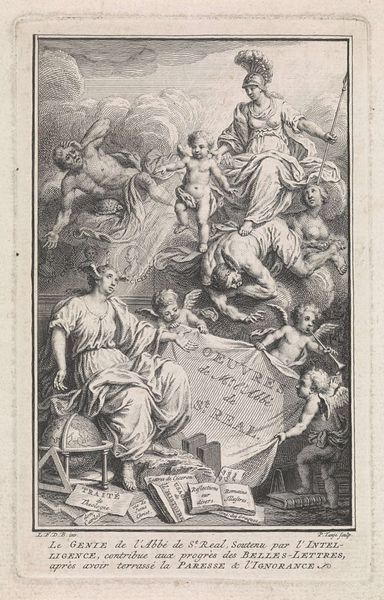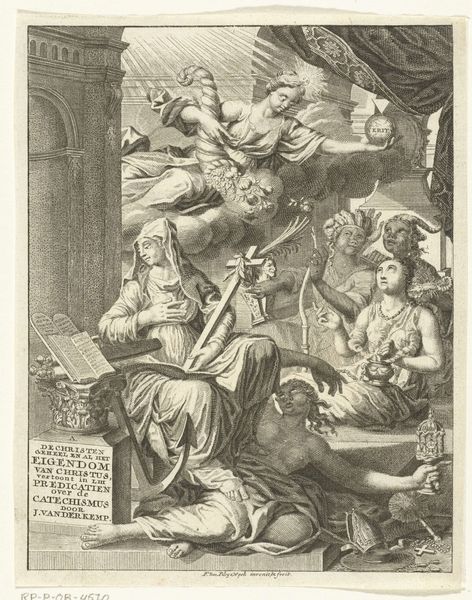
print, engraving
#
aged paper
#
toned paper
#
allegory
#
baroque
# print
#
old engraving style
#
personal sketchbook
#
genre-painting
#
history-painting
#
engraving
Dimensions: height 165 mm, width 102 mm
Copyright: Rijks Museum: Open Domain
Joseph Mulder created this print called "Schrijver, muze en dieren" or "Writer, muse, and animals," some time between 1658 and 1718. It shows a writer at work and a muse, and behind them is a scene from the fables of Aesop. Prints like this were an essential medium for the circulation of knowledge and ideas in the Dutch Golden Age. The presence of a muse alludes to the classical tradition, which was the bedrock of education and intellectual life. The fables of Aesop at the top are a more popular and accessible form of storytelling. The setting of the image is suggestive of a stage. Mulder seems to be suggesting the vital role of theater and storytelling in shaping moral and social values. To fully understand this image, one might research the publishing industry in the Netherlands, as well as the classical education system and the traditions of theater. Art is always made in specific conditions, and it's only by understanding those conditions that we can grasp its meanings.
Comments
No comments
Be the first to comment and join the conversation on the ultimate creative platform.





